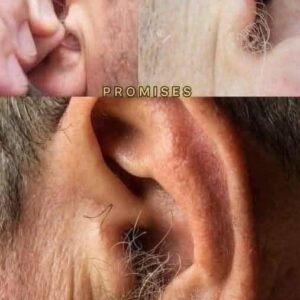At a NewsNation Town Hall, Robert F. Kennedy Jr. draws attention by enthusiastically promoting 5G technology. He warns about electromagnetic radiation (EMR) causing problems, citing a weak blood-brain barrier and cancer risks as the main concerns. He uses research he believes in to support his portrayal of danger, not just hot air. When he speaks, people pay attention because he is shouting for stricter regulations on those zippy towers that are popping up all over the place, not whispering.
Kennedy uses his activist energies to throw himself into this battle. He promotes a clear objective: control 5G before it makes us into test subjects. People can clearly hear him—his Town Hall appearance creates a stir and brings a hushed discussion to the forefront. There are a lot of questions regarding those unseen waves that speed through our days. He’s flying his studies like a battle flag, so let’s dissect it piece by piece.
Radiation Rattles Brain Defenses
Imagine your brain operating behind a locked gate. It prevents trash from interrupting the upstairs celebration. RFK Jr. fears that 5G’s EMR will pick that lock and allow issues to evade detection. When he cites experiments demonstrating that 1.3 GHz radiation loosens the gate, he is speaking seriously.
When waves strike, that barrier sways, leaving tiny openings that allow intruders to enter. Kennedy contends that a brief slip becomes a continuous leak due to the repeated blasts from towers and devices. He challenges us to consider what’s buzzing close to our brains without resorting to sci-fi terror. We start to wonder if we’re pushing that gate too hard. When rats show up, it indicates a potential problem.
Scientists zap rats with 1.3 GHz microwaves—not to toast them, but to watch their brains react. Kennedy loves this study, and it’s easy to see why. After 20 minutes, something shifts. “Single, 20 min exposure, to either pulsed or continuous wave (CW) microwave energy induces an increase in the uptake of D-mannitol at average power densities of less than 3.0 mW/sq. cm,” the report says. D-mannitol, a sugary little molecule, slides past the barrier like it owns the place.
Not every brain responds in the same way. The medulla is severely damaged—consider breathing control. After the cerebellum, which maintains equilibrium, comes the hypothalamus, which tampers with hormones. The cortex and the hippocampal regions? They hardly notice and dismiss it. Kennedy points to this as concrete evidence that EMR is flawed, even when rats aren’t people. He challenges us to consider the effects of spending our days connected to 5G signals.
Rats’ brains reveal secrets, but they don’t live our technologically advanced lifestyles. He links it to more serious concerns, but permeability climbs, not cancer. He doesn’t mince words; those discoveries stoke his passion, and he’s prepared to run with them.
Short-Term Mess or Endless Worry?
Results twist in a funny way—those leaky barriers don’t stay loose forever. Gaps pop open right after the zap and hang around for four hours. “Increased permeability shows up immediately and four h after exposure, but not 24 h after exposure,” the study notes. By day’s end, rats lock up tight again, like nothing went down.
The game is also flipped by power levels. Low dosages cause the gate to open, but when you crank the juice, it quickly leaks and clamps shut. Brains adjust, nearly retaliating. Although Kennedy omits this data in his pitch, it is nonetheless noteworthy. Does this imply that 5Gs are secure when powerful? Or do continuous, low hums, like our daily dose, go unnoticed? Instead of a single massive explosion, he wagers on the gradual grind.
He notices a trend and isn’t calmed by fleeting mistakes. That gate could be nudged once more by every phone call and tower ping. Humans soak in 5G continuously, but rats recover quickly. He’s making a daring leap and connecting the dots.
Pulsed Waves Pack a Punch
Researchers mix it up—pulsed waves flicker on and off, while continuous waves drone steady. Same power, different styles. Pulsed ones shake the barrier harder. “Differences in the level of uptake occurred between CW energy and pulsed energy of the same average power.” the study finds. Brains handle the hum fine but stumble on the beat.
Kennedy smiles at this—5G zaps data quickly and thrives on pulsed transmissions. While 5G dances to a jagged tune, old tech hummed along. He skirts barriers by hinting that this beat would hurt more. Patterns are important; if you weaken the pulse, leakage will change. He believes that the funky pulse of 5G portends danger that we aren’t seeing.


